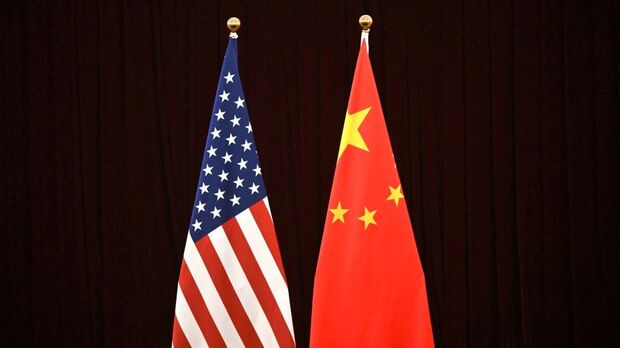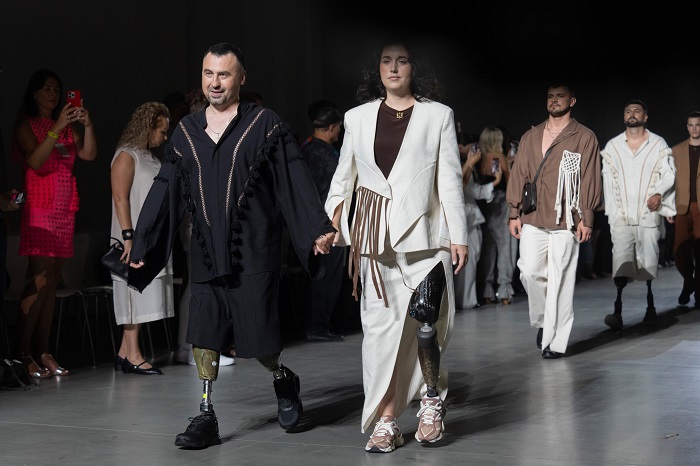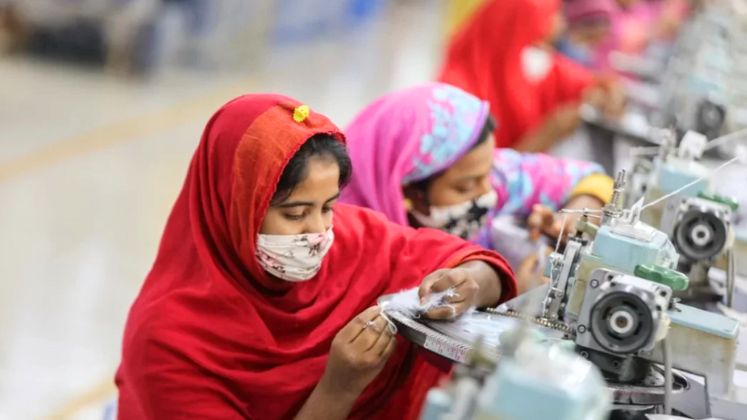FW
The West Bengal government has chalked out a strategy to attract investments of around Rs 37,000 crores to develop 10 textiles clusters or parks. Chief Minister Mamata Banerjee has said that these proposed projects were planned to fetch an estimated investment of more than Rs 37,000 crores, which includes setting up of textile parks, which can generate employment opportunities for six lakh people.
According to estimates, the development expenditure of these projects will be about Rs 9,159 crores and investment in more than 40 units could be Rs 26,100 crores. The state will provide land for five units — one in Bankura, two in Kolkata, one in South 24 Parganas and one in Howrah district for proposed parks. The state expects Rs 8,500 crores investments in the government-assisted Hosiery Park at Jagadishpur, Howrah for knitwear and readymade garments to be developed by West Bengal Hosiery Association at a cost of Rs 3,100 crores. Regent Garment Park for knitwear and apparel industries, proposed to be developed by a private enterprise at Barasat in North 24 Parganas, is also projected to attract Rs 8,500 crores in setting up units. Its development cost has been estimated at Rs 2,900 crores.
The state has offered land for another integrated textile park at Belur in Howrah in public-private partnership. This is estimated to cost Rs 1,050 crores for development and may attract Rs 3,000 crores worth of investments in power looms, readymade garments and textile processing units. At Ashok Nagar in North 24 Parganas, one such project will be developed at a cost of Rs 600 crores. It is estimated to have an investment potential of Rs 2,250 crores.
Tamil Nadu will lift the 20 per cent power cut and remove the 90 per cent evening peak hour restrictions. Power cuts and other restrictions have been in force in the state since 2008. And these have affected the textile industry which works around the clock.
Mills in southern India have been partnering with the government in taking proactive steps including issues relating to open access, power exchange power purchase systems, removal of VAT on furnace oil, etc. Since the wind season is about to begin any time, they had appealed to the government to lift the 20 per cent power cut and removal of evening peak hour restriction which is currently 90 per cent.
The government acceded to the plea of the Tamil Nadu textile industry by lifting all power cuts as well as other restrictions with effect from June 5, 2015. Tamil Nadu has the highest capacity of wind mills in the country to the extent of 7,304 MW and the textile industry accounts for more than 50 per cent of these wind mills. Textile mills have appealed to the Tamil Nadu government to utilise wind power to the extent possible by planning preventive maintenance activities for all thermal power stations and fully utilise the green power.
Denim Premiere Vision was held in Spain on May 27 and 28. The show presented a wide selection of international key players in the market. Parallel corridors let visitors flow through the show easily and let exhibitors see each other directly. The newest denim fabrics for Fall/Winter 2016-17 will be either characterised by innovative surface effects for new treatments, weaves, material mixes and ageing effects and eco-friendly in terms of most sustainable materials and treatments employed or highly functional.
Shiny optics, wooly surfaces, and harshly aged denim were some of most outstanding visual effects presented for fall/winter 2016-17. Glossy and shiny looks also characterised many denims.
Bossa presented a series of harsh denim treatments by breaking, mending and applying some slight metallic coating effects. Also new were a series of indigo fabrics produced by Bossa’s shirting and sportswear fabric division. Some shirting fabrics can be used on both sides – for cool turn-up effects – and others carry ethnic subtle jacquard motives.
Highly functional fabrics continue to represent the new frontier in denim. Calik launched its Oxygen technology that combines 100 per cent cotton special dyed yarns with regular finishing processes. These fabrics can be treated in faster times and employ less chemicals, water and energy. They can also be treated with laser, ozone, sand-paper or enzymes through various laundry treatments.
Suryalakshmi Cotton Mills reported a net loss of Rs 4.53 crores in the quarter ended March 2015 as against a net profit of Rs 0.83 crores during the previous quarter ended March 2014. Sales declined 24.57 per cent to Rs 165.12 crores in the quarter ended March 2015 as against Rs 218.91 crores during the previous quarter ended March 2014.
For the full year, net profit rose 3.93 per cent to Rs 12.17 crores in the year ended March 2015 as against Rs 11.71 crores during the previous year ended March 2014. Sales rose 0.45 per cent to Rs 705.01 crores in the year ended March 2015 as against Rs 701.86 crores during the previous year ended March 2014.
The company launched in 1962 has a state of the art denim manufacturing plant with a capacity of 40 million meters a year. Suryalakshmi is known for its yarn and rope dyed denim. It has both open end spinning as well as ring spinning systems in house. The company makes cotton, polyester and blended yarn. Its subsidiary is into the manufacture and export of denim garments. Suryalakshmi has plants in Andhra Pradesh and Maharashtra.
www.suryalakshmi.com/
China's textile industry is losing its competitive advantage in costs to other Asian countries such as Bangladesh, Vietnam and India. Many mills have been forced to switch from exports to domestic sales, which now account for 79 per cent of production.
Rapid expansion of textile investment in many developing countries in the last two years has led to oversupply. The surplus in supply has led to falling prices for some years. Many textile mills in China, Pakistan and India are operating at small margins or even at a losses. Many mills in China may even close down in one or two years, especially small mills doing export business.
Oversupply has depressed prices along the entire supply chain, hitting yarn prices in China, India and Pakistan. Mills in China have found their plight worsened by the growth of cost-effective super-large textile mills. China’s industry has been reeling from an 18 per cent rise in the value of its currency since 2005 as well as higher costs of labor, fuel, electricity and chemicals, along with a cut in domestic tax rebates.
China had been the one bright spot in the growth of world textile and garment industry, with double-digit annual growth.
Austria-based Leading knitted fabrics producer Willy Hermann is known for its brand Superfine. Willy Hermann offers fine gauge fabrics including single jersey, double jersey, interlock, fine rib, jacquard and warp knitted fabrics for an extensive range of technical applications.
Superfine fabrics are extremely fine with a high stitch density and a homogenous surface. They are also very compact and thin with the fabrics’ courses and wales being almost invisible to human eye. The company, which was established in 1934, produces fabrics in both natural and synthetic fibers and in elastic and non-elastic formats. Fabrics are given highly elastic properties by combining elastane with other materials.
Superfine fabrics are offered for many applications including functional apparel, future apparel, medical devices, air and water filtration, protective clothing and active wear. The company allows ultra fine knitting capability with unconventional materials. Willy Hermann has a range of steel fabrics for both reinforcement and electro-magnetic shielding applications. The fabric is made from 100 per cent high-grade steel and weighs just 30 GSM. The fabric is also available in stretch format with elastane.
Another offering is a uniform carbon-polyamide fabric with a single warp thread in a different colored yarn.
www.willyhermannservices.com/
Vietnam is likely to emerge in a decade as a strong contender of Bangladesh in the global apparel export market. This will happen once the Trans Pacific Partnership (TPP) takes shape. TPP is a proposed US-led free trade pact that will cover Australia, Brunei, Canada, Chile, Japan, Malaysia, Mexico, New Zealand, Peru, Singapore, the US and Vietnam and will collectively account for 40 per cent of the world GDP.
The agreement is likely to benefit Vietnam’s apparel industry, while affecting South Asian competitors like Bangladesh and Sri Lanka. Vietnam will probably overtake Bangladesh in global apparel export market share by 2024, raising its share to 11 per cent from four per cent currently. Bangladesh’s market share would increase only marginally, to seven per cent from the current five per cent, while Sri Lanka’s would decline from the current one per cent.
Vietnam’s textile and garment sector has seen fast and sustainable growth over the past few years. The export value of textile and garment products in recent years has been ranking number two in the country’s total export revenue earning a major source of foreign exchange and contributing significantly to Vietnam’s gross national product and budget.
Driven by higher capacity utilisation, improved operating leverage and increased operating efficiency and productivity, Gurgaon-based apparel manufacturer and exporter Pearl Global Industries (PGIL) total income from operations during Q4FY15 grew 36.2 per cent to Rs 3,440 million. EBITDA grew 53.5 per cent to Rs 202 million with an EBITDA margin of 6.1 percent.
Profit after tax (PAT) in Q4 grew 57.5 per cent to Rs 111 million with a PAT margin of 3.3 per cent. The total income from operations during FY15 was Rs 10,237 million and EBITDA was Rs 496 million with an EBITDA margin of 4.8 percent. FY15 PAT stood at Rs 251 million with a PAT margin of 2.4 percent.
The company’s new facilities in the south are expected to significantly increase its production capacity by about 7 per cent to 5.35 million pieces per month, through the addition of 1,250 machines to reach a total of 9,750 machines.
www.pearlglobal.com
Nandan Denim (NDL), one of the largest integrated denim fabric manufacturers in India, reported revenue growth of 22.7 percent at Rs 1,096.53 crores for the year ended March 31, 2015 and a CAGR growth of 21.2 per cent over the previous five years ending FY15. During the same period, NDL reported EBIDTA of Rs 165.44 crores, up by 24.7 per cent as compared to FY14. Profit after tax grew by 30.7 per cent to Rs 51.37 crores with a CAGR growth of 31.2 per cent over the previous five years ending FY15. NDL reported healthy EBIDTA and PAT margin in FY15 at 15.09 per cent and 4.69 percent respectively.
Growth in revenue was on the back of better scale of operations driven by capacity expansion, penetration in export segment and product diversification into yarn dyed shirting segment. Profitability improvement was on account of cost rationalization coupled with improved sale realizations with higher proportion of value added products.
During FY15, export constituted 13 per cent of its revenue and going forward the company intends to increase its share in the international trade. NDL derived 11 per cent of its revenues from shirting business. The board declared a dividend of 16 per cent or Rs 1.60 per equity share including interim dividend of 6 percent.
NDL has earmarked a capacity expansion plan of Rs 612 crores. Capacity expansion will enable the company to strengthen its domestic market share, expand its exports business and have an increased focus on value-added segments.
African Growth and Opportunity (AGOA) Forum 2015 to be held in Gabon will focus on trade and economic issues. AGOA is a non-reciprocal and unilateral preference program that provides duty-free access into the United States for qualifying exports from eligible African countries in addition to the tariff preference.
The program is similar to the Generalised System of Preference (GSP), a US trade preference program that applies to over 120 developing countries, including sub-Saharan countries. AGOA, however, builds on the GSP by providing preferential access to the US market for more products, such as apparels, and sets out additional eligibility criteria. The GSP represents a set of formal exceptions from the WTO's Most Favoured Nation (MFN) principle which allows developed countries to offer developing countries preferential treatment on specific goods. AGOA's authorization expires on September 30, 2015, hence most African governments and some US Congress members, including trade associations, particularly the US Chamber of Commerce, have highlighted the success of the program and want an expedited re-authorization of the same.
AGOA Extension and Enhancement Act of 2015 has already been approved by the US Senate, awaiting approval by the House of Representatives and the US President. AGOA and GSP, when renewed, would help develop key industries and foster improvements in governance and policy regarding labour and human rights. The initial draft released on April 16, appears to settle on a 10-year re-authorization and a 10-year extension of the third-country fabric provision, which is essential to nurture the development of the textile and apparel industry on the continent.
Trade.gov/agoa












